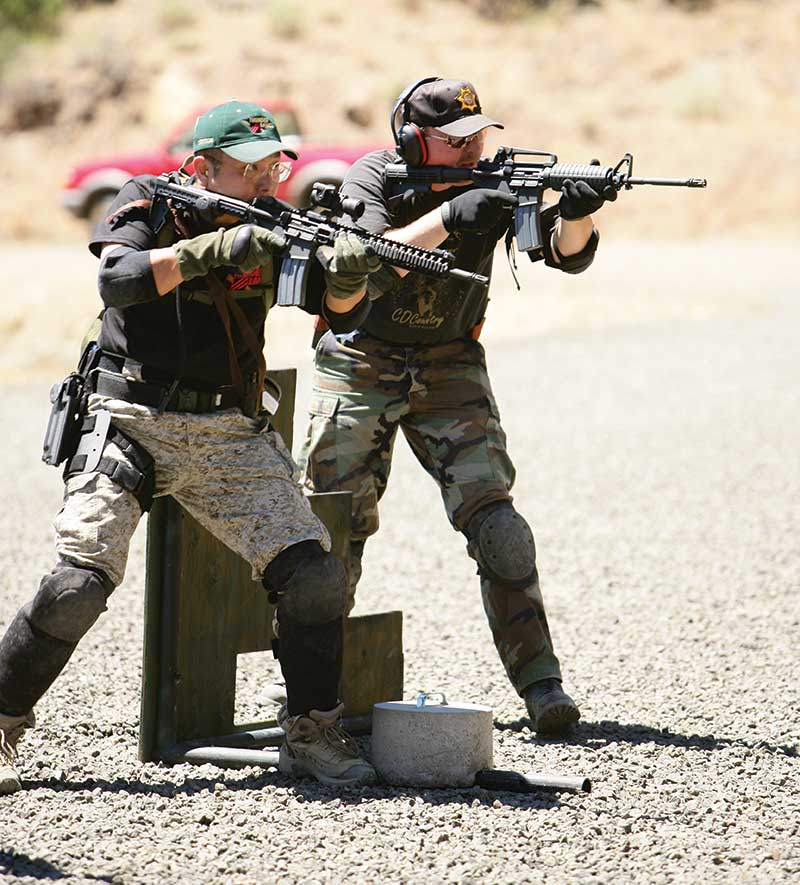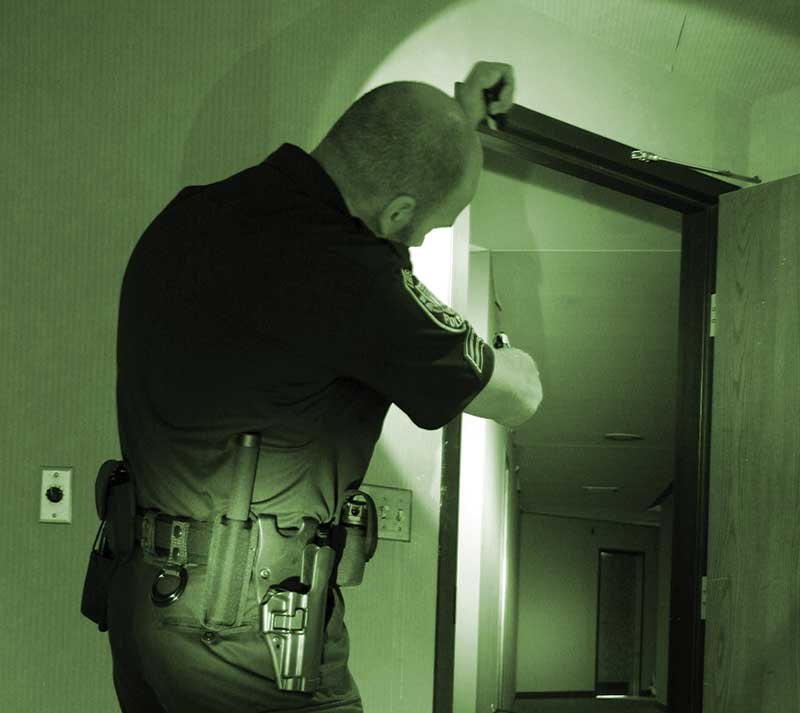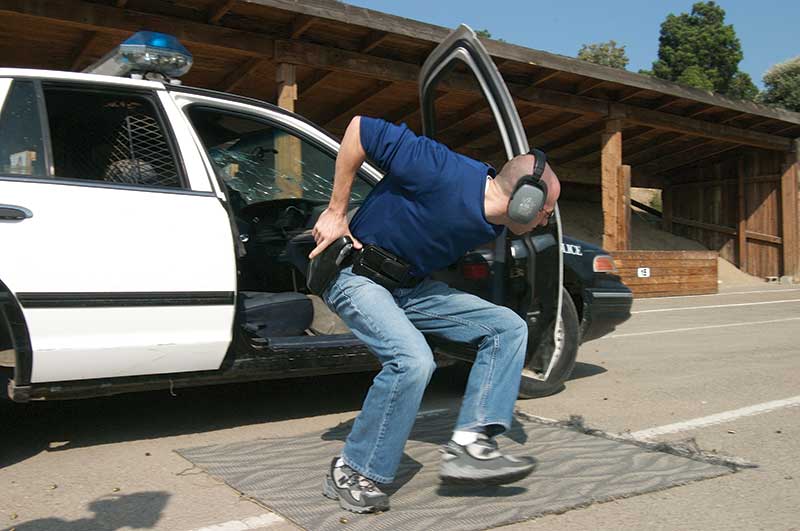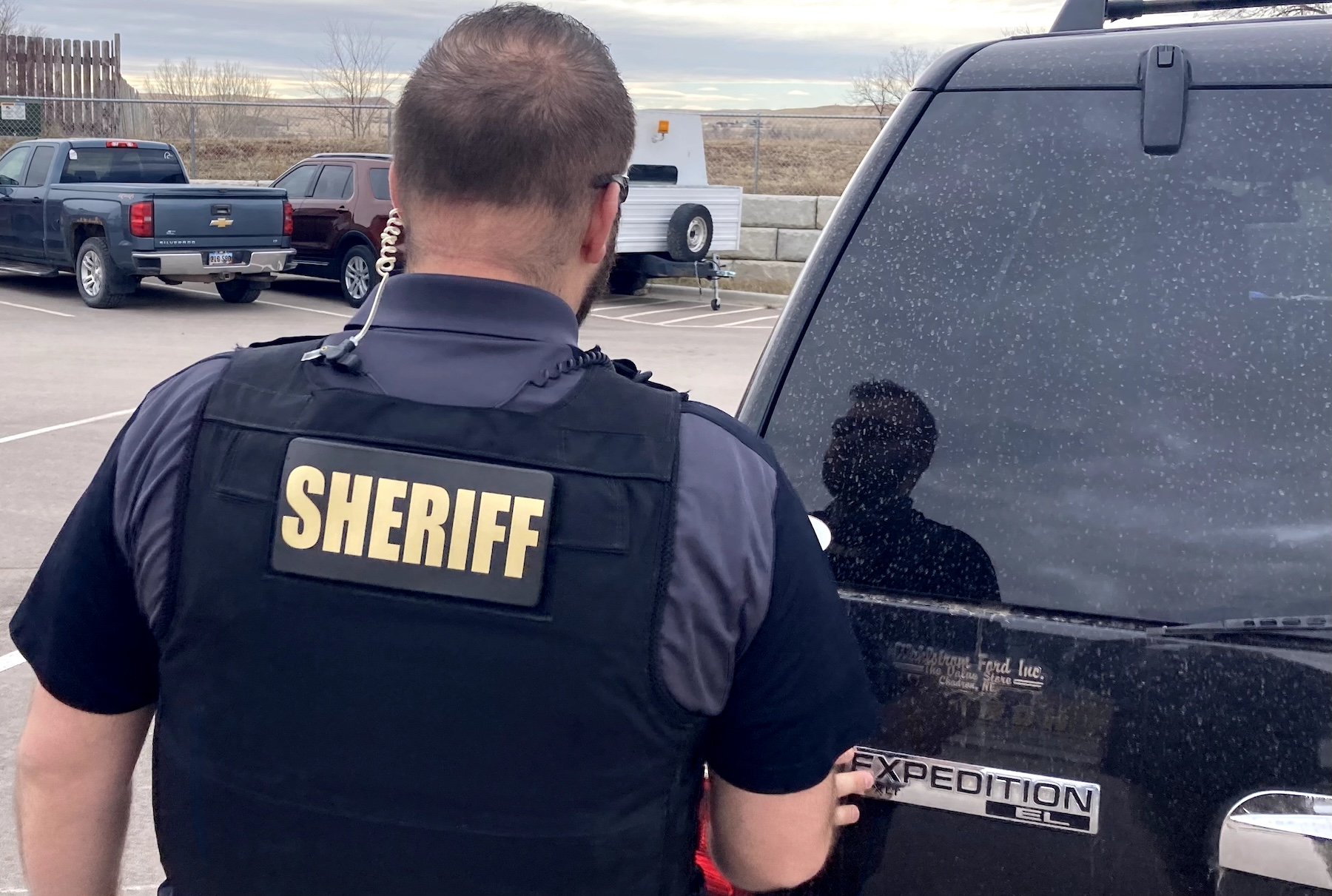
ACJA07_Reality_Tactics-2-800
Over the years, I’ve watched what’s been written about tactics and their application by cops. I noticed much of the material is geared toward SWAT and specialized units. Perhaps this is because the perception is SWAT needs these tactics more than patrol cops? But by the time SWAT gets there, patrol has already been handling the scene. While SWAT is generally used for situations like barricaded suspects — don’t forget, it was patrol that found the suspect barricaded in the first place.
The application of tactics by a team of officers is often promoted as being different than a single officer clearing a building. Having a cover officer while opening doors or being able to look in two directions is an advantage. There’s no question four eyes, four ears and two muzzles are better clearing an area than just two of each.
Logic and in some cases departmental policy dictates single officers do not clear buildings or make felony vehicle stops — these are probably good doctrinal concepts.
Waiting for a backup is almost always better than charging ahead — it all counts for your 20 folks. To err on the side of caution is probably best, or if not, wear good armor. The adage “don’t let your battleship attitude overload your rowboat ass” applies to tactics — regardless of seniority or years on the job. Old cops can die just as quick as rookies. The reverse is also true. It will be very hard to acquire new combat skills in the middle of a fight.
STREET COP TACTICS
What if the situation required one officer to respond, or maybe even forced them to apply tactics because the problem allowed no other easy or worse yet survivable course of action?
This is designed to make regular street cops aware of how they can use tactics. If your individual tactics are already rock solid then they might serve as a review or refresher.
There’s very little difference between basic and advanced tactical techniques. Usually basic tactics are advanced, and advanced techniques wind up being basics applied — especially in a fight.
A STRONG STATEMENT
Cops shouldn’t learn and apply tactics because they want to or enjoy it. You should learn, practice and be aware of tactical techniques in case you might have to use them.
THE BASICS
Tactics, at minimum, consist of four points. You can add or sub-tract whatever you like. As for me, being a novice tactician, these four points have worked pretty well for me over 39 years of use.
Yet, I always remain rigidly flexible when learning or applying tactics in training operationally. Please note I never said “real world.” If you don’t treat your training like you’re always in the “real world,” or if it’s not taken seriously to start with then what was the point?
ARCHITECTURE — READ THE GROUND
Architecture in this application is the ability or awareness to read the ground you may be or are about to fight on. This can be anything from how did you park your car to take advantage of it’s strong points on the felony vehicle stop, to door hinge placement which shows which way the door you’re about to go through opens. Everyone reading this has pushed on a door that had pull to open painted on the door — haven’t you?
POOL: THE GAME OF ANGLES
Pool is a ball game wherein the player with the best angle for the shot will put the most balls in the pockets. So then it’s pretty simple, the person with the most balls wins. The angle issue addresses how to safely get the best angle to visually clear an area or get the muzzle and sight on target or access a threat with the least amount of you showing. This is also often called or referred to as slicing the pie or pieing.
MAXIMIZE: DISTANCE
Many cops bristle up as they often think it’s good to make physical closure quickly. You see it often on the Top Cop television videos. Officer’s run up to a car and project themselves or a firearm into the vehicle’s occupant compartment. Applying simple stand back and look at it for moment logic these acts wind up being silly or dangerous — often both.
In reality we should maximize distance to potential threats whenever possible until such time as you can gain compliance using voice command or apply compliance by gunfire if required. I suggest against making closure with a possible threat whose hands you can’t see or avoid continuing to close on a hostile or non-compliant threat. Every officer reading this realizes the act of handcuffing or the act of closure to hands on time is absolutely one of the most dangerous things a cop can do.
Distance allows you to make decisions, sometimes even better ones than you might make at arms length. Distance also allows you to apply marksmanship if required. Distance is your friend. Exposed empty hands on a suspect are a good thing — you should train to be a magnificent, no screw around handcuffer.
MINIMIZE: YOURSELF AS A TARGET
This is a pretty straightforward issue. People will shoot you because they can see you and they see you because you let them. In the application of tactics which we all know can be dangerous there’s no sense in helping our opponent by leading with muzzles, standing in back lit doorways, sticking your head up away from cover or making closure before we have the situation under some degree of control.
So knowing tactics are dangerous, it comes down to this. Read the ground, work the angles as far away from the possible threat or threat area, by applying the first three points it makes the fourth one work.
SLOW AS YOU GO
The slow as you go comment always brings up “what if they’re killing the hostages.”
“Violence Of Action,” “Element Of Surprise,” “Who Dares Wins” and “Audacity.”
All pretty cool concepts, I know I’ve done them all when I was younger and healed faster. But street cops don’t throw grenades, call in air strikes or travel in teams of heavily armed and armored squads, platoons or companies — last I checked.
Street cops applying tactics is sort of like a police car; no matter what speed the car is going the siren is only going 40 mph. If you outrun or go so fast applying your version of tactics that you get killed or injured, you wind up being the problem. There’s always an exception, but if you don’t get there whether across town or down the hallway what’s the point?
WHY NOT WAIT FOR SWAT?
This may be something for you to consider. In the US 80 percent of law enforcement agencies have 20 officers or less. Of them, 80 percent have less than 12 officers. Of those, 80 percent have 6 officers or less.
Sounds like in some cases there might not be a SWAT team or even an effective active shooter program— if one can be. Maybe a cop who knew something about tactics might come in handy — if only to themselves.



















